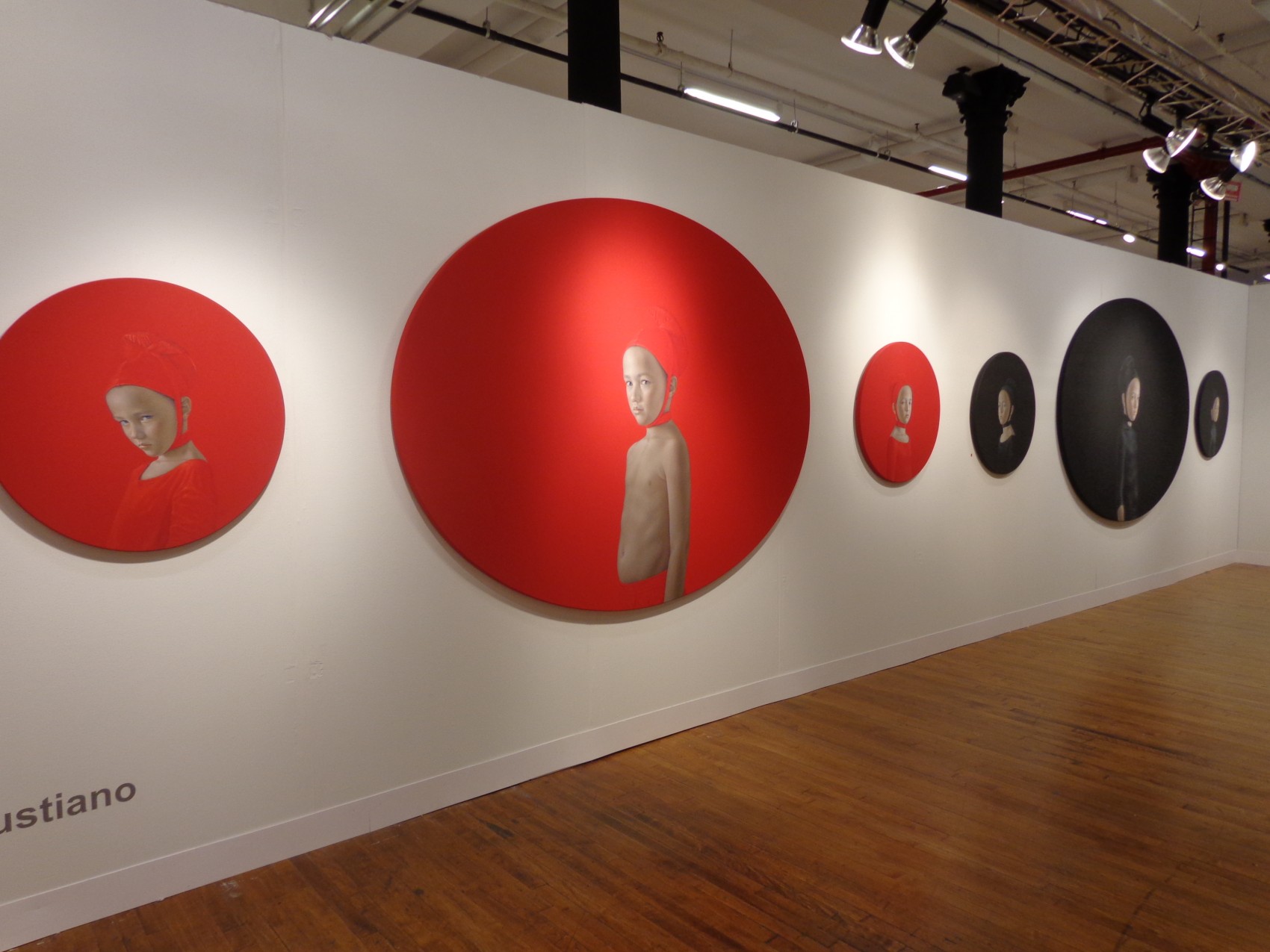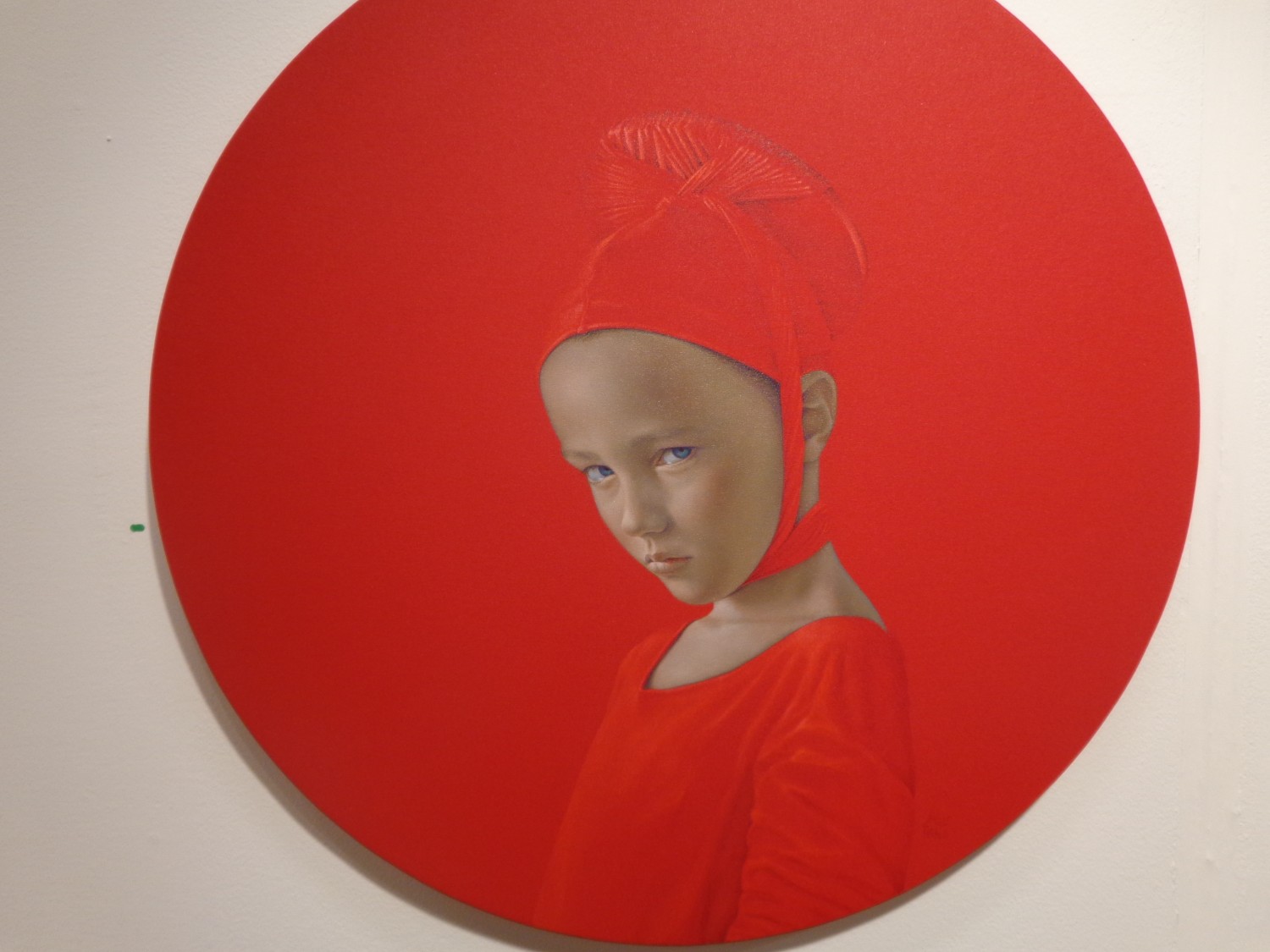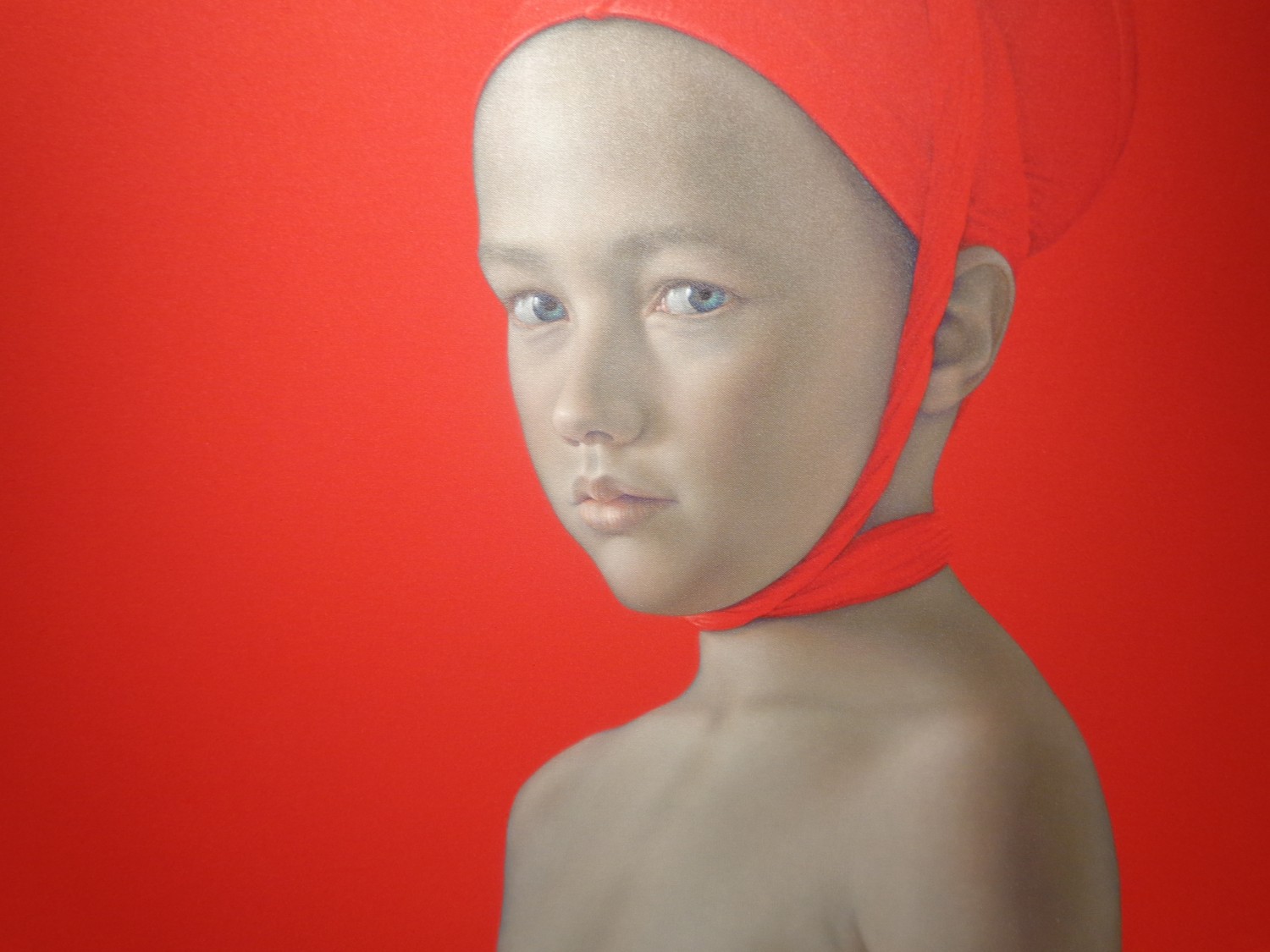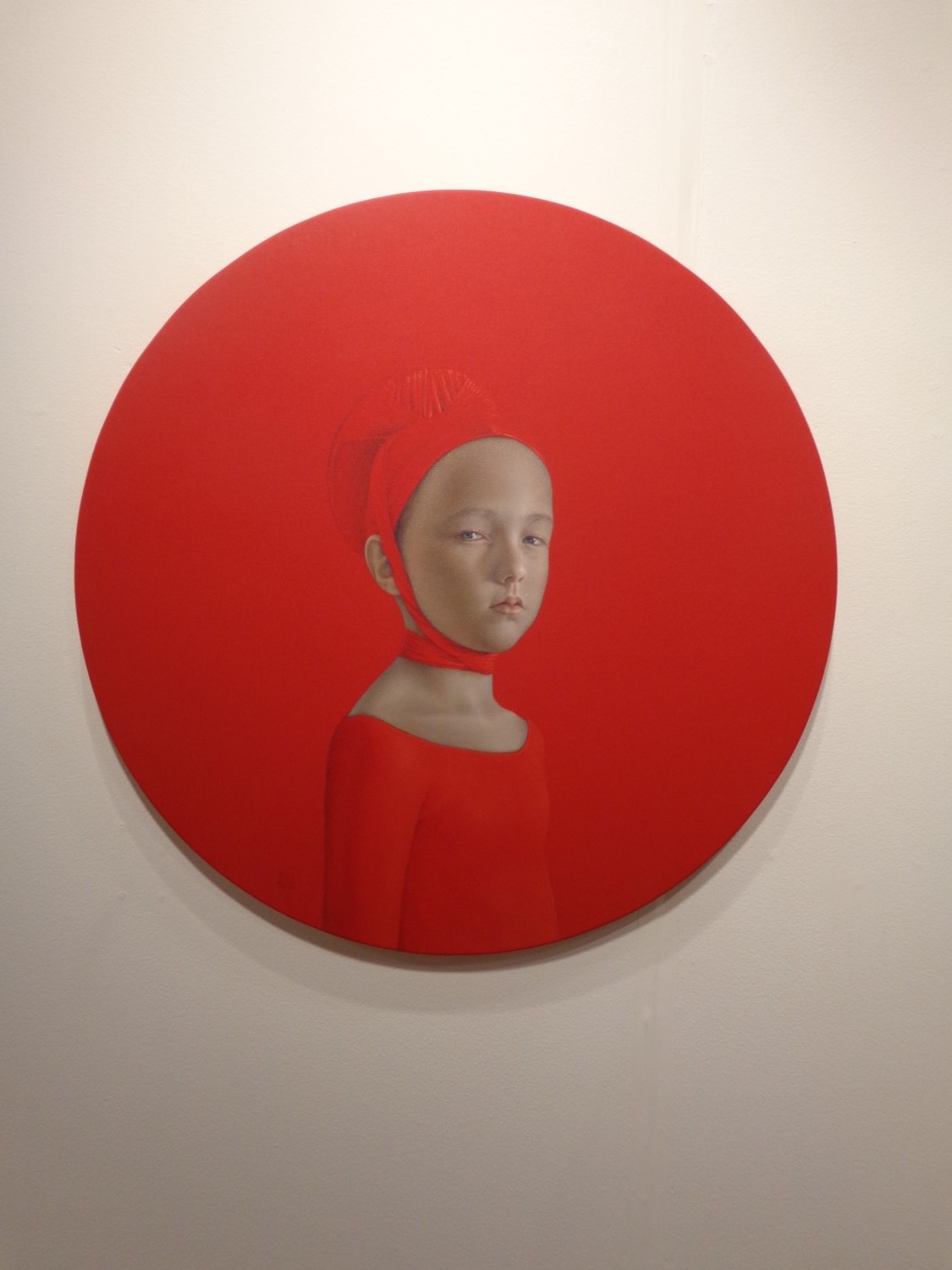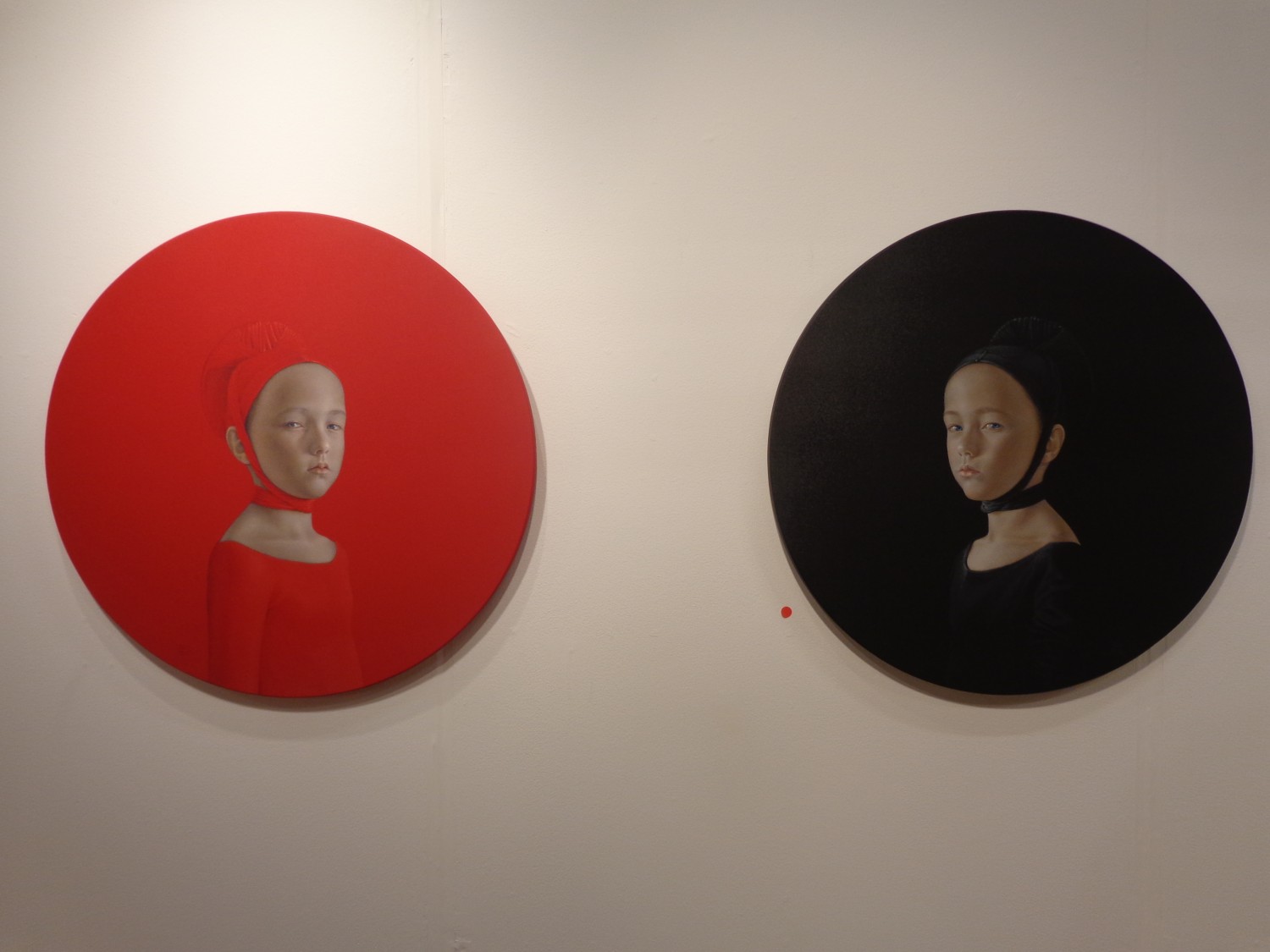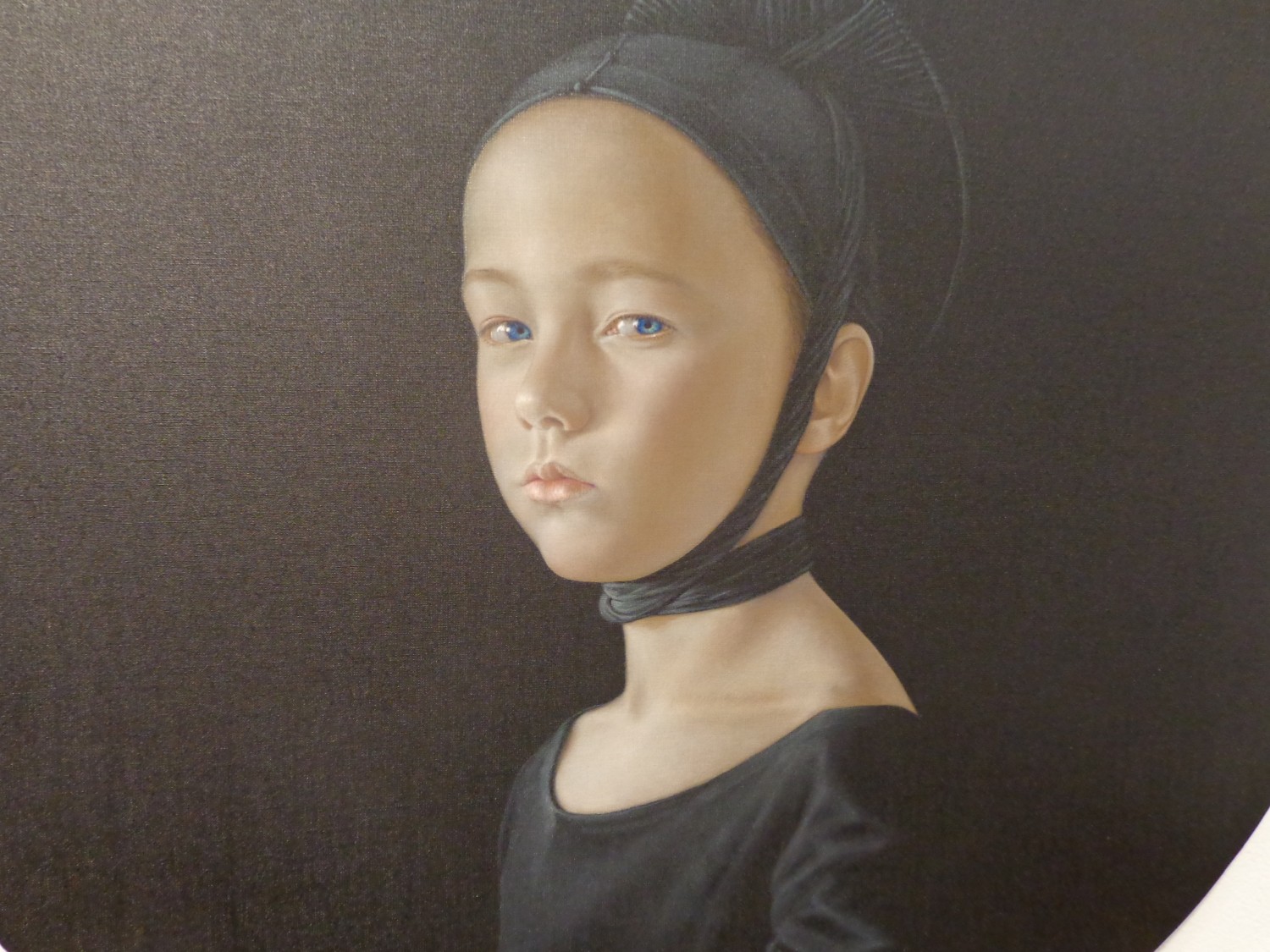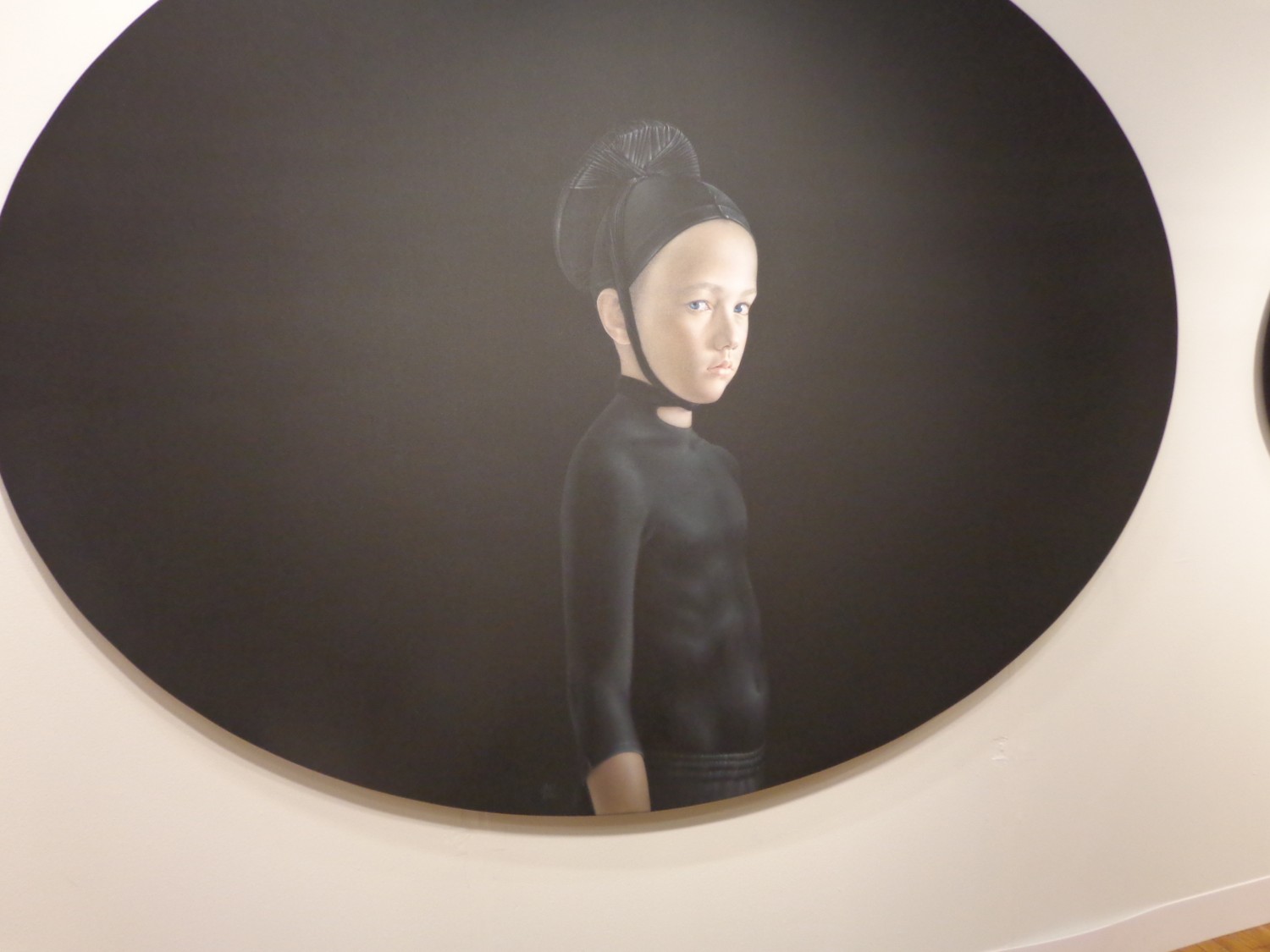@VOLTA ’13: Salustiano’s Children
It’s arresting – seeing six symmetrical circles holding the faces of little scowling children, all spread across the wall, three red paired against three black. Cast in Renaissance clothing, these children wear the exact color of the background, making the definition between the two an act of magic. Your eyes tell you where the headdress stops and where her shirt begins, but they only know because of delicate shadows and folds that are obvious in some places, but left invisible where the painted fabric is as tight as the canvas.
It’s hard to tell whether these are all the same little boy or girl – all of their faces have the same elegant roundness, the same crystal blue eyes and the same smooth perfect skin. But their expressions are subtly different – the four within the smaller circles seem to hold more contempt in their eyes, like they’re upset with how small their worlds are compared to the two children within the larger circles, whose expressions lie closer to curiosity or suspicion.
The only element offsetting perfect symmetry here comes in the clothing of these two children within the largest circles. The boy in red is bare-chested, wearing only a headdress while the child in the large black oval wears a shiny black shirt that grips his little body so tight he might as well not be wearing it at all.
The largest circles are stretched wider to form more of an oval shape – the smaller perfect circles play a supporting role by framing their larger counterpart and interacting with the opposite color across the wall. The abrupt visual contrast of the black versus red, along with the dagger stares coming from intense perfect children makes the whole wall come alive with ideas about conflict and disdain, youth and maturity. And the Renaissance headdresses hint at an address of institutionalized religion or just religion as a whole.
Perhaps the most dynamic part comes where the two colors meet – both children with the exact same grimacing glare pointed right at us, although it really seems like their unhappiness is actually rooted in their physical closeness to the antidote – the opposite color with a contrast too strong to look directly at.
Born in Seville, Spain in 1965, Salustiano has an exhibition list too long for even multiple pages on his website. He’s shown between 10-20 exhibitions per year since 2001, and began all the way back in 1994. Beginning in Spain, then moving to Portugal in 1999, he showed in Italy in 2000 and New York City in 2001, and has since had work displayed all over the world, from Seoul to Salzburg to Moscow.
Salustiano’s VOLTA comment read:
“For me, emotion is a key word in contemporary art and should continue to be so in the future. In recent years in the art world, artists have tried to flee from ’emotion’: saturated with every kind of visual stimulus, they have been more concerned with making an ‘impact’ on the spectator than in touching an emotional fibre. I strongly believe that emotion should be the principal motivation and purpose of the artist. For centuries art has emotionally impacted upon, moved or even perturbed the spectator; and this ‘interior’ movement has contributed to the evolution of mankind. I also think that even if the artist intends to stimulate the intellect of his or her audience, then this should be done through ’emotion’….”
For more of Salustiano’s work, see his website.
All photographs taken by Lindsey @VOLTA NY ’13 where Salustiano was represented by KAVACHNINA CONTEMPORARY in Miami.

